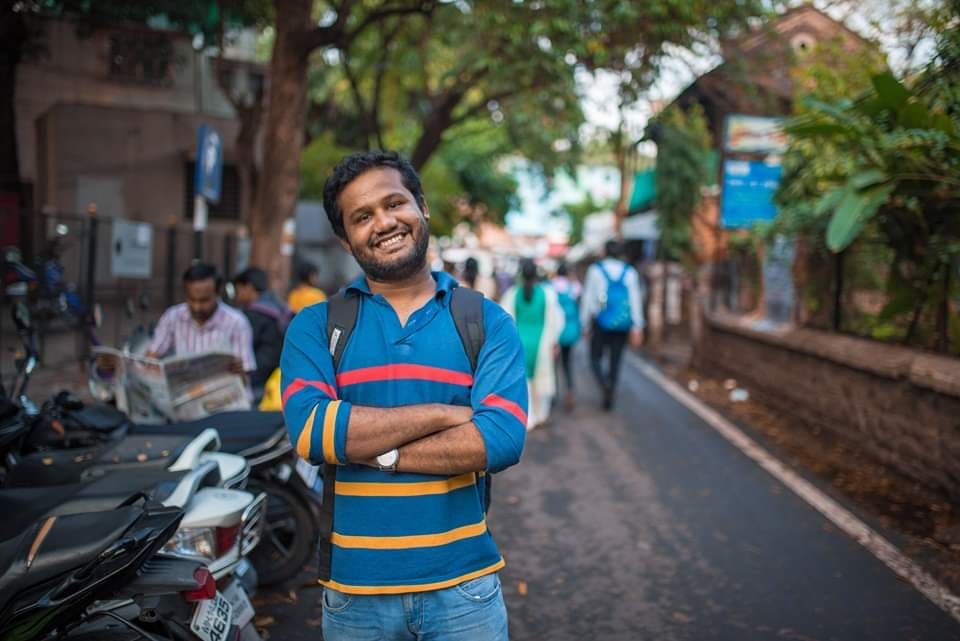Gaurav Somwanshi
(Round Table India is doing a series to put together the Bahujan perspective on the Coronavirus pandemic)
 Anu Ramdas: As a tech entrepreneur whose work is aimed at innovating processes that bring in price transparency, particularly with fresh produce, give us a background of what supply and demand look like from your location?
Anu Ramdas: As a tech entrepreneur whose work is aimed at innovating processes that bring in price transparency, particularly with fresh produce, give us a background of what supply and demand look like from your location?
Gaurav Somwanshi: Last year, the monsoon lasted long enough that a good amount of crop was destroyed, especially in Maharashtra. 30-40% of grapes were destroyed, and what happened to the onion crop and resulting price hikes became a matter of memes. To take the example of grapes, and my experience of working with Mr Vilas Shinde, founder of India’s largest farmer collective of small-landholding farmers, in a single district of Nashik alone, over 30,000 acres worth of grapes remain to be harvested. This is approximately 4 lakh tons of grapes yet to be harvested and sold. Add to that, we had a hailstorm in the month of March in districts of Marathwada, resulting in the destruction of primarily the wheat crop.
Apart from these crop losses, the immediate impact of the pandemic has been on labour that is required for harvesting, transport, packaging, etc. It’s a real possibility that a good amount of the produce will be lost simply because of the unavailability of labour. Although food supply has been deemed as a critical sector and promises have been made to keep it running unabated, it’s simply going to break down.
Fruits and vegetables that were procured from other states and distant regions will simply stop making their way to their older destinations.
Anu: Kuffir has written often about how frameworks such as capitalism don’t fully explain the Indian economy as it is primarily dominated by caste mode of production; he stresses even terms like supply chain are restrictive and do not bring out the complexity in the Indian scenario, your thoughts?
Gaurav: What we call a supply chain is actually a supply web, and the list of allied sectors is huge, like factories making packaging material, materials required for transport and so on. There is no clarity yet whether these will be resurrected in time.
We have always dreamt of an ideal integrated value chain where everything from sowing to harvesting to marketing and selling would occur in a seamless way, but other than a couple of exceptions, the entire scenario has been the opposite.
There is a long list of activities and stakeholders that come into play before your food reaches your table, and there is a value addition at each point. Instead of the ideal scenario of a farmer collective led integrated value chain, the scenario that exists today is that the entire chain is fragmented and disjointed with needless middlemen doing exploitation throughout the way. Also, we mustn’t forget that the activities done within the value chain are critical and essential.
Since nearly 85% of our farmers are marginal with small-landholdings, and also considering the landless labourers, it’s not realistic to assume that these value-adding activities will be done at their level alone. To make matters worse, as Kuffir says, the problem lies in treating the farmer as a standalone entrepreneur who has to bear all the risks and losses, without any support of the state and society.
It takes only a small blow or calamity for everything to blow up. Even before the pandemic, the prolonged rains destroyed the onions which caused a huge rise in prices. There is a common perception that rising prices of agricultural commodities means that farmers are earning more. But whether there is an abundance of supply (glut) resulting in dirt-cheap prices or acute shortage leading to higher prices, the farmers and labourers are always getting exploited.
The rates at APMC (Agricultural Produce Market Committee) where most of the produce is sold and traded don’t help the farmers at all. And even if some crops come with MSP (Minimum Support Price), as Suresh Ediga has pointed out, these MSPs have not risen, or even been adjusted for inflation for many years.
There have been notable exceptions to this scenario, but they are a handful. The provision for the model of a Farmer Producer Company came into being through the Companies Act (1956) in 2003, and I’ve had the privilege of working with India’s largest farmer collective comprising over more than 7000 small-landholding farmers with nearly two dozen crops.
There is an attempt being made here to remove the needless middlemen and gain efficiency through scaling while ensuring fair equity to everyone in the value chain. There is something promising in this model, but as I said, this remains an exception.
So, what we currently have is a scenario where there is a ridiculously large and disproportionate involvement of human resource in an activity which fails to give them even basic returns. What happens when you add a global pandemic to this edifice built on fragile foundations? Why would it not collapse? And when it collapses, it will fall upon whom the hardest?
Anu: How are the fresh produce and the bahujan producer of it going to be impacted in the immediate and long term as the Covid19 devastates the fragile economy that holds the bahujan world?
Gaurav: Without painting a very grim picture of what could happen if things continue unabated, what we know without a shred of doubt is that it’s absolutely essential that the state provides for wide distribution, and ensures the food supply isn’t hampered. The pandemic destroys livelihoods before it destroys lives, so we need DBT (direct benefit transfers) in both cash and kind (like grains) at a universal level. News about deaths due to starvation started pouring in since the lockdown began, so we have to ask ourselves, how much is this to be blamed on the virus, and how much on our system?
Having said that, we can expect that the way to go forward is to seek regional self-sufficiency and rely less and less on fruits and vegetables from distant regions. It’s easier said than done, but it’s much too risky to rely on distant parts for one’s daily needs. We have to find ways of preserving food longer and minimizing post-harvest losses. For example, Mr Vilas Shinde, has urged grape farmers that they should start considering processing grapes into raisins, which have a much longer shelf life, right away.
At this juncture, I would like to paraphrase Mr Shinde’s own advice, where he has urged farmers, producers, and labourers to start seeing themselves as activists. The primary responsibility of everyone will always be their own safety and their loved ones’ well-being, and beyond that, they must participate in the food supply value chain to ensure that they don’t fall victim to famine.
In the long term, we would have to revise our ways drastically: the future would be shaped by the restrictions brought by this pandemic, restrictions which seem will last longer than we can imagine. Less reliance on exports for revenue would be an immediate change. The initiative to have an integrated value chain anchored by farmer collectives needs to be looked into seriously. The state must support agricultural activities and the farmers more directly than the namesake loan-waivers or insurances.
All in all, the world as we know it is about to end. What happens during the storm will require drastic measures, and how we resurface from the calamity would give us an opportunity to build a system which is not so heavily laden with inequalities and exploitations that a single disease could end up decimating the lives of the most vulnerable.
~~~
Gaurav Somwanshi works in the Agritech domain with primary focus on Blockchain technology.
He is nominated Future Leader by British Council, Dalai Lama Fellow by University of Virginia, Fellow by Royal Academy of Engineering, UK, and is Associate Editor of ‘Frontiers in Blockchain’ journal.










